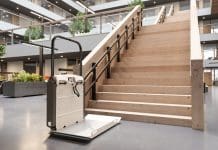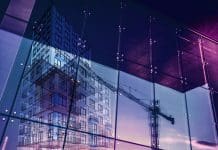“Smart offices are the future of digital built Britain”, says Mike Hook, executive director at LMG. Here he looks at the uptake of smart buildings for improved sustainability and better occupant experience
You don’t need a crystal ball to see the future of digital built Britain. Look no further than the office. As a smart buildings and connectivity specialist, I’m in awe of how the corporate real estate sector has upped its game in response to the pandemic. Office landlords have deployed the latest technologies and are leveraging the IoT to create efficient, bespoke workspaces.
Households are becoming increasingly ‘smart’, too. A YouGov survey found that 23% of households in the UK own at least one smart device, and that was in 2018. In my view, real estate innovators are a few steps ahead, and give us an early picture of what our digital future might look like.
The need to entice workers back to the office, and adapt to hybrid work models, has increased technology adoption and automation in the built environment. The trend towards digital transformation and the use of data to inform decision-making is being leveraged in workspaces to improve employee wellbeing and productivity.
Enticing workers back to the office with smart technology
The pandemic accelerated the transition to the smart office. Remote working threw out old assumptions about the role of the office, and landlords had to think strategically about how they could entice workers back.
Employees had grown accustomed to the comforts and convenience of working from home. In corporate real estate, we saw a shift towards an office that was more like a home away from home. Workspaces need to boast more collaborative spaces and comfortable facilities than ever before. Furthermore, the widespread transition to hybrid working changed how the office was being used. Taking inspiration from the hospitality sector, office landlords started to design more comfortable, flexible spaces that occupants could personalise.
What is powering this change? The IoT and smart technologies are the technological backbone of the smart office. According to Fortune Business Insights, the IoT market was valued at $384 billion in 2021, and is forecast to grow rapidly to $2,465 billion by 2029. A slice of this growth is being funnelled into improving the office experience.
Smart offices can improve occupant experience
In modern offices, sensors are being deployed to improve the occupant experience. For example, the pandemic brought a whole suite of new gadgets to the fore. We started to see IoT sensors monitoring occupancy to ensure that office spaces did not become overcrowded. Indoor air quality (IAQ) sensors were also used to ensure spaces were well-ventilated, which was key to reducing the spread of Covid-19 indoors.
Smart offices allow occupants to personalise their environment. Temperature, lighting, and indoor air quality are simple-to-use, often operated via smartphone apps. This puts the control in the hands of those who will be using the space day to day.
We’re also seeing increased automation in smart offices, freeing up workers for more useful tasks. Smart printers order ink when they are running low, and there are smart blinds which lower when the sun is becoming too bright – so it doesn’t distract an employee at their desk. By automating the mundane aspects of being in the office, landlords are saving time, energy, and resources, while delivering a more positive occupant experience.
Facilitating a hybrid world with smart offices
Office landlords have woken up to the fact that offices won’t be used in the same way they used to be. Over 80% of firms said they had adopted hybrid working in February 2022, and the Chartered Institute of Management (CMI) said companies should have a policy in place for hybrid work as a ‘best practice’.
To adapt to the demands of a hybrid workforce, smart buildings offer inbuilt flexibility. There are innovative developments in smart AV technology to facilitate hybrid work experiences. To make online meetings more interactive, offices are investing in smart cameras with wide angle lenses and sensors that move to frame different participants in a hybrid meeting more naturally.
Remote booking systems for the office are providing employees with the ability to reserve a desk or meeting room and provide the flexibility to decide which hours they’d like to be in the office.
The need for connectivity
Smart technologies enable landlords to identify under-utilised spaces, and to create more user-led office design that reflects the ways employees are using the space. This data-led approach boosts productivity and ensures occupants feel comfortable and supported in the office.
That said, these features cannot function without a strong backbone of connectivity. We need to prioritise the IT infrastructure if we want the built environment to be truly ‘smart’.
Universal wired and wireless connectivity is required, including 4G or even 5G mobile services. Deploying this physical infrastructure is no mean feat, including access points and supporting systems, not to mention the thousands of devices that will rely on these networks.
The demand for mobile connectivity is high, as mobile apps provide a user-friendly service. We can’t overstate the importance of getting this right, and future proofing the in-building infrastructure to support 5G services is key.
A smarter, greener future
Another challenge that the smart building industry faces is how to leverage their potential efficiency for the good of the environment. According to Deloitte, buildings and construction are responsible for 40% of global emissions, and to reach the targets set during COP26 last year, we’ll need to drastically reduce emissions.
Smart buildings offer an appealing solution in the face of Net Zero targets. The ability to control temperature, lighting and IAQ easily means it’s easier to track and manage usage. For example, sensors that track occupancy will turn off lights or reduce the heating if no one is using a part of the building. This helps companies with their ESG reporting, ensuring that they meet their targets.
However, there’s no guarantee that a smart building will be more sustainable than a traditional building. This level of insight depends on a stable smart platform. Without this, connected devices will not have the support they need to deliver longer-term sustainability.
We need to co-ordinate IoT sensors and applications if we want to gain useful insights into building and service usage. Bringing disparate IP networks together and creating an integrated building network means we can monitor and control every part of a building.
There’s also the maintenance woes that come with having disparate system networks. If your user services are stretched across a number of specialist contractors, who do you call when a device fails, or an incident occurs? Building and supporting an integrated building network managed under a ubiquitous platform allows you to get the full picture.
It’s with this bird’s eye view that the built environment can go green.
A digital and smarter built Britain
Smart buildings have the potential to offer both improved sustainability and a better occupant experience. They’re enabling facilities managers to quickly adapt their service to facilitate hybrid working, which will continue to be necessary across all market sectors and industries.
However, this flexibility requires robust, universal connectivity that underpins the smart building, and provides a means to bring a network of systems and sensors together.
Smart buildings, powered by a secure, fully-integrated IoT network, and linked to the 5G capabilities of the future, are a force to be reckoned with. Beyond the corporate world, this will help hotels, hospitals, universities and more to go digital and meet sustainability targets.
If we invest in the underlying resilience of smart buildings, the future of digital built Britain looks bright.


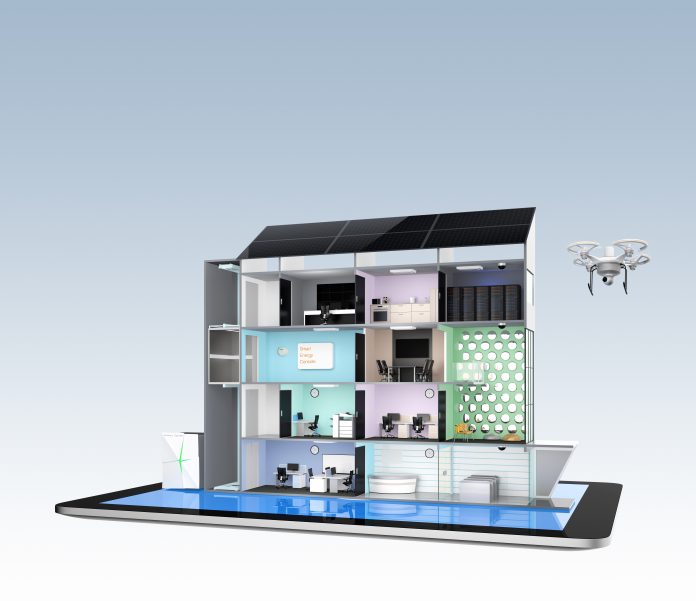

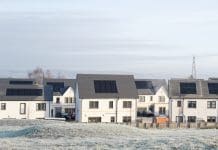
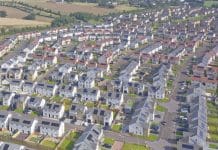
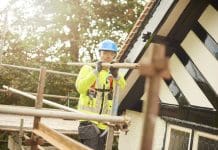



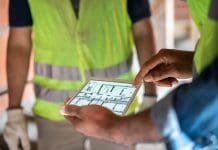
![[VIDEO] Shaping the future of safety at the RSMA Annual Conference & Dinner 2025 Discover insights and highlights from the talks at RSMA Annual Conference & Dinner 2025 in Kenilworth with the team at Re-flow](https://www.pbctoday.co.uk/news/wp-content/uploads/2025/02/Re-flow-Shaping-the-Future-of-Safety-Media-218x150.jpg)
